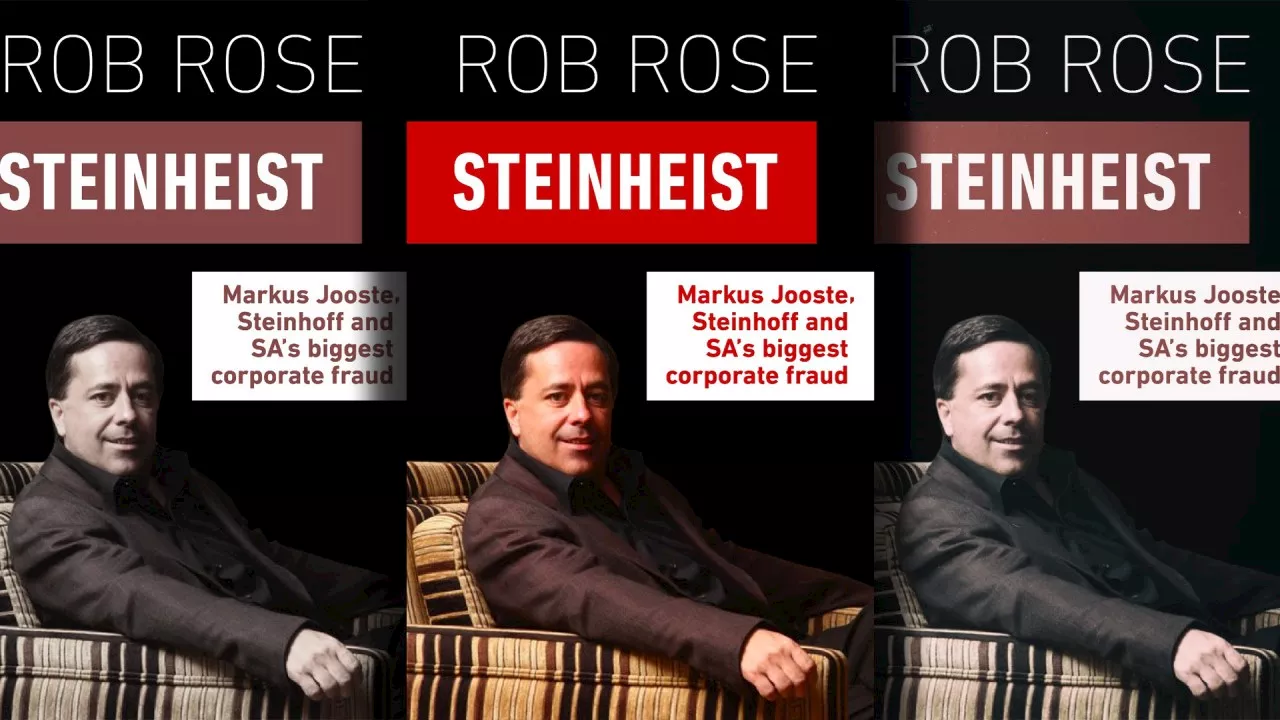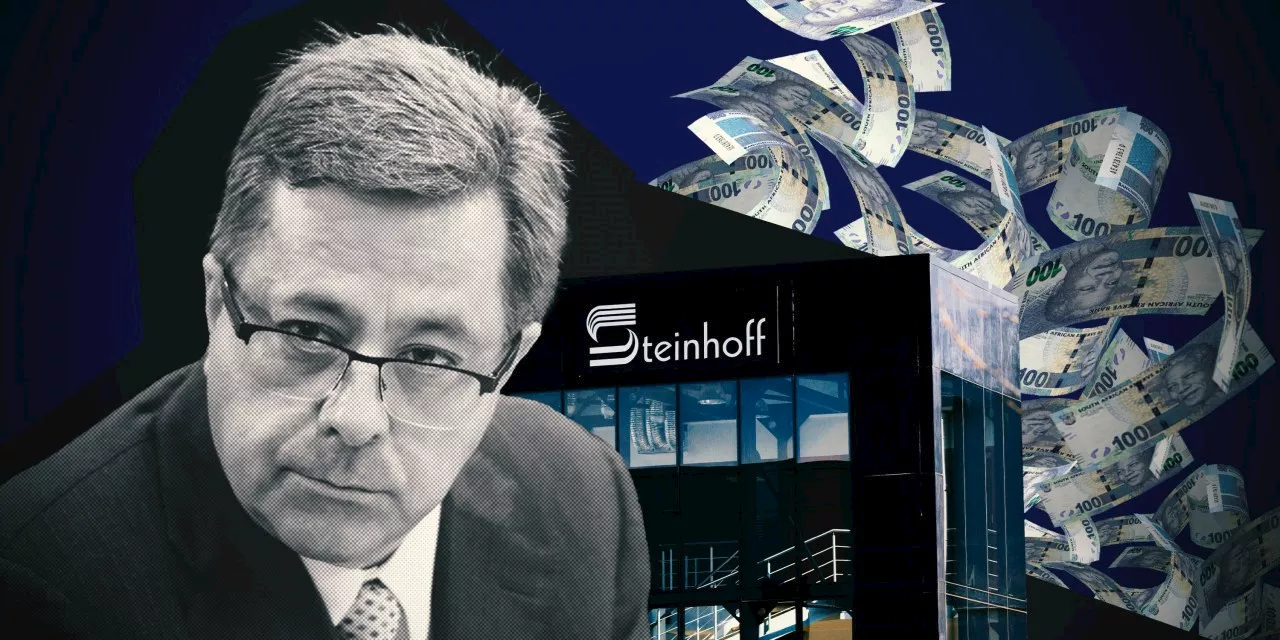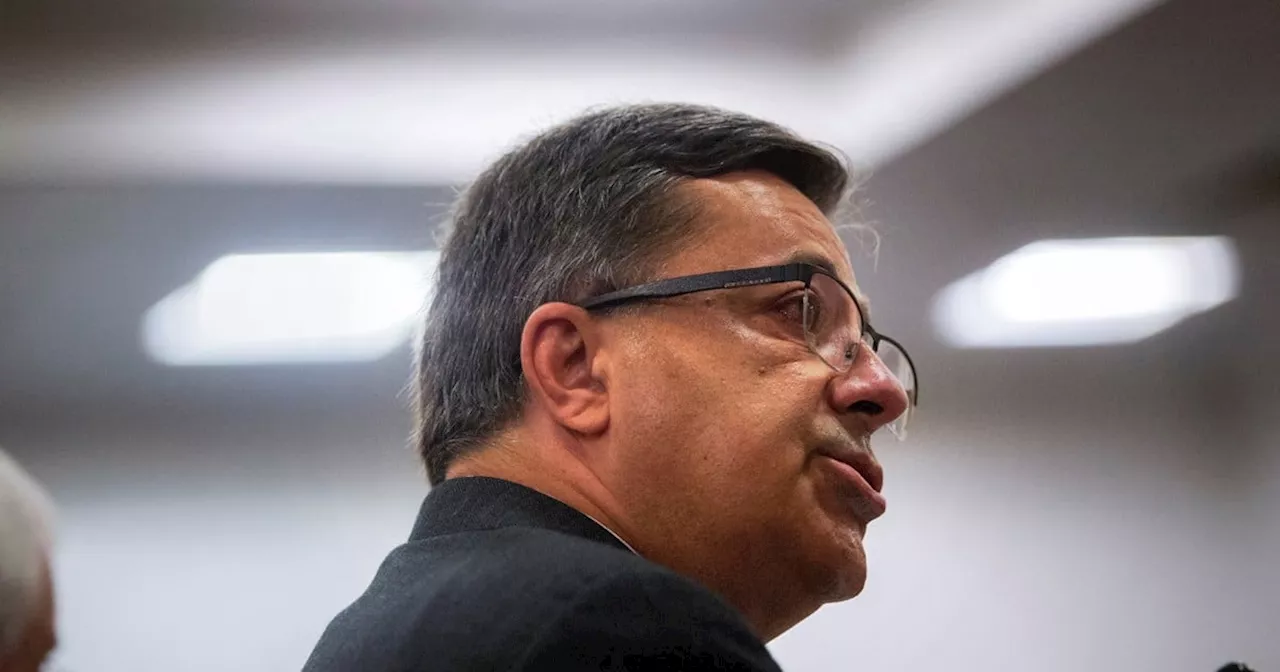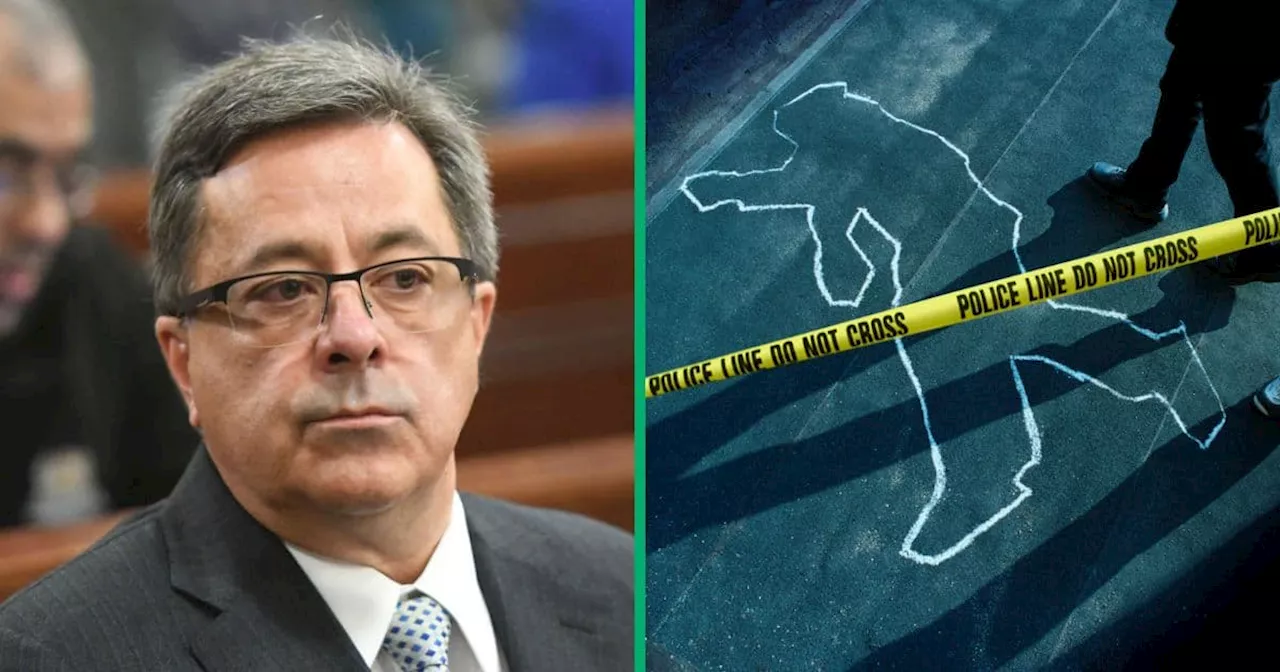The Steinhoff crash wiped more than R200bn off the JSE and knocked the pension funds of millions of South Africans.. Here is a chapter from ‘Steinheist’.
The Steinhoff crash wiped more than R200bn off the Johannesburg Stock Exchange, erased more than half the wealth of tycoon Christo Wiese and knocked the pension funds of millions of ordinary South Africans. Here is a chapter from ‘Steinheist’.For the first time since the rumours started, Christo Wiese’s blood ran cold. Until then, he’d largely written it off, the scurrilous talk of fraud, the endless drivel. That day, it all changed.
Joining Wiese in that boardroom that day was Dr Steve Booysen, the 55-year-old former accounting lecturer who, until a few years before, had been the CEO of South Africa’s largest commercial bank, Absa. Booysen, irredeemably unpretentious, was the banker who you sensed would always rather have been sitting on the stoep of his farm with a glass of pinotage.
The enormity of the words hit Wiese as if a wave of icy water had rolled up out of nowhere, and smacked into him. Secondly, Deloitte was worried about several mist-encircled deals that had been taking place in Europe between Steinhoff and various obscure overseas companies, like Talgarth Capital . For one thing, these companies seemed to be run by people close to Jooste, yet the auditors and the board had never been told these were related parties – which would have required greater scrutiny.
Wiese stared at the list again. He was sceptical of the auditors’ conclusion. “Hang on a minute,” he said. “On the issue of the cash, explain to me what the problem is here. Cash is cash. Surely, you just ask the bank what’s in the bank account, and you’ll know how much cash Steinhoff has?” “We can’t use that,” said Deloitte. “We don’t think you’re properly independent of Markus Jooste’s management team, so we can’t make use of your report.”
Jooste sounded impatient, hot-tempered and cranky: “But I’ve given Deloitte all the bloody information,” he said. “I gave them a memory stick with many gigabytes of information. And I’ve given it to them plenty of times.” Jooste, characteristically smooth and ice-calm, didn’t blink. “No problem, I understand it totally,” he said. “Do you guys honestly think I don’t know how a wechsel works?” he asked. “It’s all above board. You guys are panicking for nothing.”
Then the Deloitte auditors asked if they could have some privacy to consult among themselves. They went to the room next door and for over an hour were locked in intense deliberations. An impatient Jooste, meanwhile, had climbed in his car and driven back to Stellenbosch. Jooste seemed mighty relieved. “Thank God,” he told Wiese. The crisis, Wiese believed, had passed. The accounts would be signed off, once Markus had gone through the formality of fetching the documents that proved his case. Dark phrases like “accounting fraud” wouldn’t be uttered again in his Parow office.The next day, just after midday, Wiese got another call from Deloitte. “We’re very sorry,” they said, “but we’ve reconsidered.
It was at this meeting that Jooste floated a convenient theory for the first time: that Deloitte were “biased” because they’d been representing one of Steinhoff’s sworn enemies in Austria, Andreas Seifert. Seifert had poisoned them, Jooste suggested. To understand his argument, you’ll need some background.
“Either way,” Steve Booysen argued, “we can’t get rid of Deloitte at this stage.” He told Markus: “If we get rid of Deloitte, there’s a good chance we won’t be able to find any new auditors to replace them. And even if a new auditor does accept the job, they’ll have to start from scratch and there will have to be full disclosure of what happened with Deloitte. Which means they’ll probably ask for a forensic investigation, too.
This comforted the increasingly gun-shy Wiese: if Markus just fetched all those documents, the whole misunderstanding could be cleared up. Booysen was less certain. The former banker’s suspicion of Jooste had been growing over the previous few days. “At this point,” Booysen thought, “I’ll believe it when I see it.”
PwC called Wiese back: “We’ve assembled a big team to make the forensic investigation happen, and we can do it quickly.” “Go ahead,” said Wiese. This was also good news. It made Wiese believe that, despite new land mines exploding every few hours, maybe Steinhoff could still put out audited financials within a few days after all. So, he climbed into his Lexus SUV and headed home for the weekend.Wiese hadn’t slept particularly well. He woke up early and called Jooste in Germany.
That night, back in South Africa, Steinhoff’s audit committee had another crisis meeting. Late on Friday, Steinhoff had put out an announcement saying that even though it hadn’t obtained Deloitte’s signature, it still planned to release “unaudited results” the coming Tuesday. It told investors that Deloitte had “not yet finalised their review of certain matters” which had arisen in the Germany criminal investigation.
Over the next few hours, Booysen got a number of other SMSes from Jooste, saying he was on his way, he was just putting together the files, he was sorting out the documents. But these messages were all in English – a sign he’d probably crafted them with his lawyer. Finally, at 5 pm, one of the FGS lawyers called Wiese: “Christo, are you at the office?” he asked. Stay there. I’m on the way with ‘a message.’ ” Then Wiese knew.
As Steinhoff’s directors began to drift into the boardroom at De Wagen Weg Office Park, none of them, at that point, had any idea just how appalling the news really was. Heather Sonn, a feisty 45-year-old and the retailer’s youngest director, walked in and saw the solemn faces. She turned to Theunie Lategan and said in Afrikaans: “En nou? Wat gaan hier aan? Dit lyk soos ’n begrafnis.”Over the next few months, Sonn would play a vital role in trying to save the company.
Inside Steinhoff’s offices, the company’s 150-odd staff figured that something was up, given the number of earnest men in suits, with lever arch files precariously balanced in their hands, half jogging in and out of the building. Then a message popped into some of their inboxes. It was from Markus Jooste. “Hi there. Firstly, I would like to apologise for all the bad publicity I caused the Steinhoff company the last couple of months,” it read.
As if to somehow mitigate the crushing blow, Steinhoff added that it still had “a number of high quality profitable businesses around the world”. It was parlous consolation.As the stock market opened, the slaughter began. The reaction was carnivorous: Steinhoff’s share price went into freefall, cartwheeling 61% from R45.65 to R17.61 per share. Within 24 hours, R120bn in value had vanished, as traders at the banks flooded their Bloomberg screens with frantic “sell” orders.
Greg Davies, the head of private client trading at the small boutique investment company Cratos Capital, remembers the drumbeat of tension that morning when he got into his office in Joburg’s forested suburb of Dunkeld. “I’ve been in this game for more than two decades, and I’ve never seen anything like it. Everywhere, there was fear, anxiety and shock. It was the sort of emotional ride you have when you find out someone close to you has died. You can’t believe it can be true,” he says.
Anchor Capital, a small investment house run by Peter Armitage, a barrel-chested former rugby player who still looks the part, immediately fired off a letter to all his clients. Anchor announced it had taken an “in-principle decision to exit our holdings” as “there are clearly more unknowns than known information”. “Fraud remains a distinct possibility,” he added. Armitage, a man who was famously born in a caravan park , says the ordeal was “very painful and traumatic at the time.
“You have to realise just how rare this was,” says Armitage. “It really was a once-in-a-lifetime investment event. At the time, Steinhoff was in the top ten largest companies on the JSE, and for this to happen, you’d have to have an epic failure at so many levels.” “Consider the quantum of the fraud at Enron,” says Armitage. “In rand terms, Enron lost R693bn in its last year, $67bn, while Steinhoff at its peak was R350bn. This makes Steinhoff the largest corporate fraud, globally, of the last two decades.”
They are on the edges of most French large towns, but, although profitable in the 1990s, had not kept up with the times and for years had been making losses, and building up debt.
South Africa Latest News, South Africa Headlines
Similar News:You can also read news stories similar to this one that we have collected from other news sources.
 Steinheist: The inside story behind the Steinhoff scandalThe Steinhoff crash wiped more than R200-billion off the Johannesburg Stock Exchange and erased more than half the wealth of tycoon Christo Wiese.
Steinheist: The inside story behind the Steinhoff scandalThe Steinhoff crash wiped more than R200-billion off the Johannesburg Stock Exchange and erased more than half the wealth of tycoon Christo Wiese.
Read more »
 Steinhoff’s dogged battle to keep its secretsSteinhoff’s continued refusal to provide access to a 7,000-page PwC report on its R200bn collapse hampers journalists’ ability to tell the full story.
Steinhoff’s dogged battle to keep its secretsSteinhoff’s continued refusal to provide access to a 7,000-page PwC report on its R200bn collapse hampers journalists’ ability to tell the full story.
Read more »
 ‘Steinhoff’ author on accounting fraud scandal and Markus Jooste death: ‘A tragic story in many ways’Markus Jooste, the alleged mastermind behind the Steinhoff crash, is believed to have died by suicide on Thursday.
‘Steinhoff’ author on accounting fraud scandal and Markus Jooste death: ‘A tragic story in many ways’Markus Jooste, the alleged mastermind behind the Steinhoff crash, is believed to have died by suicide on Thursday.
Read more »
 Parliament did it's best to hold Steinhoff accountable for fraudAfrican National Congress (ANC) MP Yunus Carrim, who chaired the Standing Committee on Finance at the time, said looking back, it was a major feat for Parliament to hold a multi-national corporate to account.
Parliament did it's best to hold Steinhoff accountable for fraudAfrican National Congress (ANC) MP Yunus Carrim, who chaired the Standing Committee on Finance at the time, said looking back, it was a major feat for Parliament to hold a multi-national corporate to account.
Read more »
 Jooste objected to size of his fine compared to Steinhoff's in report published this weekJooste objected to size of his fine compared to Steinhoff's in report published this week
Jooste objected to size of his fine compared to Steinhoff's in report published this weekJooste objected to size of his fine compared to Steinhoff's in report published this week
Read more »
 Former Steinhoff CEO Markus Jooste Allegedly Kills Himself, South Africans SuspiciousThe former Steinhoff International CEO Markus Jooste allegedly committed suicide one day after he was fined almost half a million for the Steinhoff scandal.
Former Steinhoff CEO Markus Jooste Allegedly Kills Himself, South Africans SuspiciousThe former Steinhoff International CEO Markus Jooste allegedly committed suicide one day after he was fined almost half a million for the Steinhoff scandal.
Read more »
